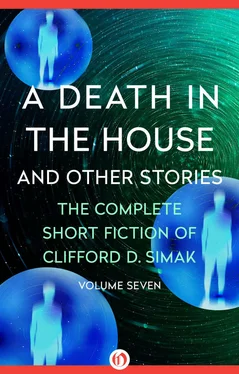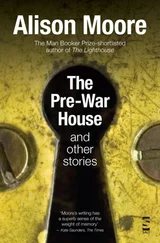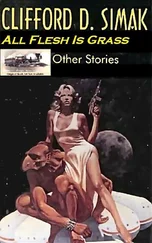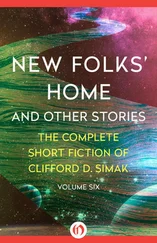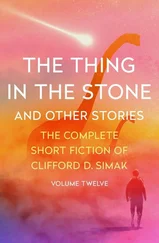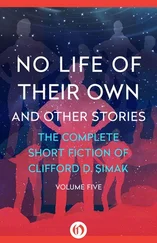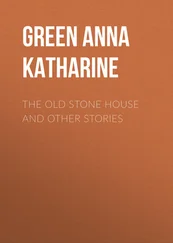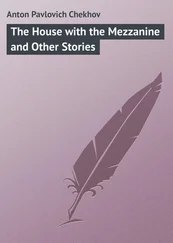A Death in the House
And Other Stories
The Complete Short Fiction of Clifford D. Simak, Volume Seven
Introduction by David W. Wixon
INTRODUCTION
The Misunderstood “Hiatus”
“We can travel forward to the day when all that exists comes to an end in the ultimate dispersion of wasted energy, when even space may be wiped out of existence and nothing but frozen time remains.”
—Clifford D. Simak in “The Creator”
After five of his stories were published in 1931–32—the fifth being “The Asteroid of Gold” in the November 1932 issue of Wonder Stories —Clifford D. Simak largely vanished from the world of science fiction publishing for five years (only one of his stories would be published during that time: “The Creator” in the September 1935 issue of Marvel Tales , a forum more akin to a fan publication than to a professional magazine). However, when former rising star writer John W. Campbell Jr. was appointed to take over the editorship of Astounding Science Fiction in September of 1937, Cliff quickly returned to the field, publishing three stories in that magazine within five months.
Since that time, some historians of science fiction have argued that Cliff Simak had purposely withdrawn from the field; some even characterized “The Creator,” which was so iconoclastic that it might well have been rejected by other publications, as an impolite farewell gesture to the field. Those historians suggested that Cliff had become dissatisfied with the low pay, the low quality of the science fiction being published, and the low expectations of the editors in the field. Robert Silverberg would later say, with some truth, that Cliff “drifted away from writing fiction” because the magazines paid poorly and slowly and the editors “were often capricious and limited in their taste.”
While it is true that of the three science fiction magazines around at that time, Astounding Science Fiction had temporarily suspended publication early in 1933 and both Wonder Stories and Amazing Stories were skipping months, making their continued survival seem precarious, it is a mistake to suggest that Cliff Simak had decided to turn his back on the field, or to quit trying to write. His journals show that during the years in question, he submitted at least five science fiction stories to magazines, one of which was initially accepted but then returned when the magazine suspended publication. (Keep in mind that all of this took place against the background of the Great Depression.)
And although Sam Moskowitz said that Cliff “tried a few things outside the sf field, but felt they had come off too poorly to submit” ( Seekers of Tomorrow , World Publishing Co., 1966), Cliff’s journals again show that during the period at issue he had not only written, but had submitted at least seven non–science fiction stories or articles—including a couple of Westerns, a couple of “outdoor life” stories, and several stories that cannot be characterized absent more to go on than their titles—to various markets.
Clearly, then, Cliff Simak had not given up on writing. And if you’re thinking that a total of twelve stories and articles is not a great deal to show for the efforts of a writer with pretensions of seriousness, keep in mind, for one thing, that in 1932, Cliff was still at his very first job in the field of journalism, working on a small-town newspaper (in Iron River, Michigan) for which he both wrote a column and had risen, in a short time, to the position of editor. Surely he was kept busy; the editors of such small-town papers generally had to do just about everything that was necessary to get the paper out, including going out to sell ad space.
In addition, Cliff and his wife, Kay, moved from Iron River to Spencer, Iowa, in August of 1932, when Cliff become the editor of the Spencer Reporter . In July 1934, they moved on to Dickinson, North Dakota, where Cliff became editor of the Dickinson Press . In April 1935, it was back to Spencer, Iowa—Cliff had been hired by the paper’s new owners to convert the Reporter from a semi-weekly to a daily. And during the following four years, the syndicate that owned the Reporter , using Cliff as a sort of trouble-shooter, transferred him to Excelsior Springs, Missouri; Worthington, Minnesota; and finally Brainerd, Minnesota. The odyssey would only end when Cliff got a job with the Minneapolis Star in 1939.
In short, although Cliff Simak had only “The Creator” published during the four-year period of 1933–37 (apparently written in 1933, it was published in 1935), you cannot say that he was not trying to write—and all while moving around the Upper Midwest to handle the challenges involved in rescuing a series of small-town newspapers from possible failures.
According to what Cliff told Moskowitz, it was not he who had given up on science fiction, rather, he felt at the time, that there was no longer a market. He wrote “The Creator,” he said, and finally sent it to William L. Crawford, who hoped to start a literary sf magazine but could offer only a lifetime subscription as payment. It turned out not to be a long lifetime. … “Had there been a market,” Cliff told Moskowitz, “the story would never have been written, for I would have slanted for that market.” But Cliff let Crawford have the story, he said, “out of sheer admiration for any man with guts enough to try a new science fiction magazine.”
And as a final weight in the scale, I would suggest that “The Creator,” rather than having been written as a kind of “I’ve had it with you people” flaming gesture, actually fits within the body of Cliff Simak’s ongoing exploration of religious thought. It was an extension of ideas that appeared in the author’s very first published story, “The World of the Red Sun.”
“The Creator,” still showing the crudities to be expected of an inexperienced author and appearing in a publication probably read only by a few hundred people, attracted notice for its defiance of the taboos that bound more commercial publications nonetheless. And when John W. Campbell Jr., was made editor of a revived Astounding Science Fiction , Cliff Simak believed that science fiction had a new life. And he was right.
David W. Wixon
Published originally in the April 1957 issue of Galaxy Science Fiction, this story comes from a time when drunks were funny, uneducated backwoodsmen were the salt of the earth, and people who resented the government’s intrusions into their lives were heroes.
The world has changed a great deal since that time, but some verities are eternal—including the one that says that people won’t always recognize when aliens come calling. Clifford Simak used this image a number of times over the course of his career, and it proved to be an effective mask for the deeper meanings in his stories.
—dww
I was sitting on the back stoop of my shack, waiting for the jet with the shotgun at my right hand and a bottle at my left, when the dogs began the ruckus.
I took a quick swig from the bottle and lumbered to my feet. I grabbed a broom and went around the house.
From the way that they were yapping, I knew the dogs had cornered one of the skunks again and those skunks were jittery enough from the jets without being pestered further.
I walked through the place where the picket fence had fallen down and peered around the corner of the shack. It was getting dusk, but I could see three dogs circling the lilac thicket and from the sound of it, another had burrowed half-way into it. I knew that if I didn’t put an end to it, all hell was bound to pop.
Читать дальше
